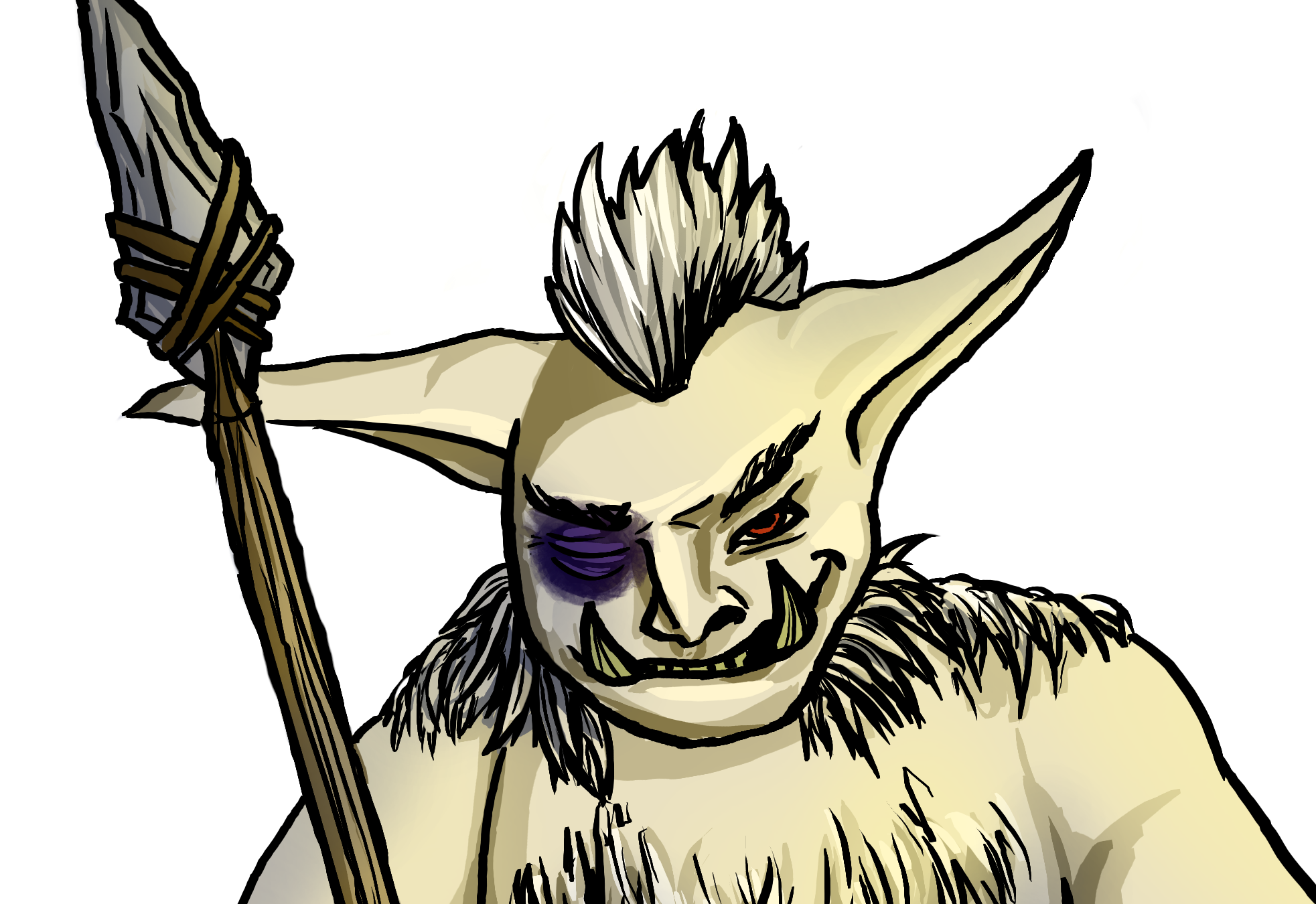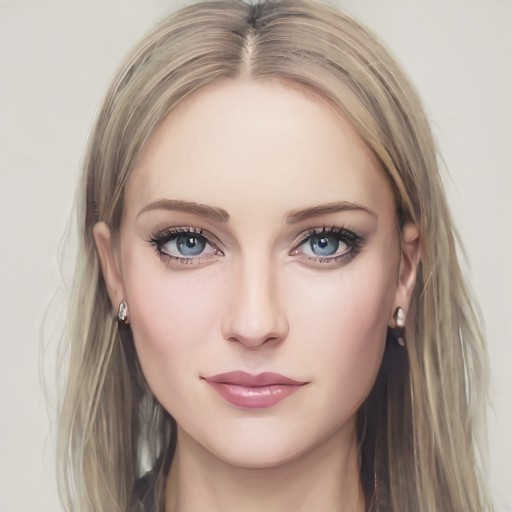Turves (Tuɾves)
"We are the children of the stone-gods, even if the Sonzturfs left for the sunlight. You word for our species, 'dwarves,' comes from our word for people, 'turves.'"
"Dwarves" is an Adrakian-distorted pronunciation for the word of both the species and the ethnicity of the short people who live deep underground, Turves is used by people on the surface to specifically refer to the ones who only reside underground, instead of including the whole species meaning their surface-dwelling kin who migrate up.
Language
Turves speak Turvdzind, one of the few languages that have resisted Adrakian influence due to the Turves' isolationist preferences. It has however, shifted from its roots in Turvesdzint due to the addition of the loan words and the absorption of Lost Route Turves' dialects despite efforts to wipe out those dialects.
Dialect
Dialects spoken by Lost Route Turves are officially described as being wiped out upon their reunion with their kin. The only surviving and recognized dialect is a language itself - Turfzin - spoken by the Sonzturfs or other sunlitlands people who learn Turfzin.
Those who speak Turvzin are generally understood well enough by Turvdzind speakers and vice versa, though hindered by the need to clarify or slowdown and repeat words.
Traditions and Customs
Garments
"How can you stand to wear leather down here? How are you not sweating a gallon a minute?""How can you stand to wear so little up there? How are you not freezing the moment you step away from a fire? Because we live here and you live up there."
Materials
Most Turves dress in heat-resistant material, such as silk from the underground spiders or leather made from the other creatures of the deep underground.
The silk is a lightweight, flexible, and maleable material used to make the interior layer of armor, or for regular garments.
Leather is more typically used in places that are more likely to come in contact with heat sources or as an armor material - it makes for a popular outermost layer for wearing outside of residences.
Dress Styles
Unlike when heading up to the surface, Turves will generally wear less material the further underground one goes due to the heat, preferring to cover what needs protection for their jobs. Physical strength is a standard for beauty, so fashion trends towards showcasing major muscle groups such as arms, legs, and abs.
The styles change when one gets closer to the Sunlit Lands, as Turves used to the heat of the Undercities find themselves facing chills. To fend off the cold, they will add layers of silk and once on the surface, they tend to add in Sunlit Lands clothing intended for winter months.
Armor
Most armor sets are in layers - undergarments, silk and padding to prevent chafing, leather at points needing protection but unsuited for metal, chainmail, and then plate parts. Very few Turves have a full set of plate armor when heat exhaustion is a risk for ending combat before the enemy is truly defeated.
Due to the threats of underground life, most wear at least the padded silk with leather reinforcements when outside their Undercities. The few who take the journey up to the Sunlit lands tend to bundle up and add clothing over their chainmail if they have it.
Isolationist Policy
Unlike the surface-dwelling dwarves, Turves hold their isolationist values as law. Sunlit Lands people have to go through a lengthy process of proving they have legitimate business before entering the underground pathways. Items from the surface are confiscated and removed in order to maintain the "purity" of Turves culture.
The few who would speak on the origins of the policy refer to diplomatic disasters in the early history of exploring the sunlit lands, or the machinery used by the Turves as they're typically described as having better weapons, better armor, better anything made of metal or stone.
The policy extends beyond the Sunlit Lands and out to the Lost Routes. When Lost Routes are reunited, a process involving comparing their way of life to the ways of the Undercities and the Lost Routes' ways from before the events when the Lost Routes were lost.
"If there is something Turves will resist, it's ... how would you say 'breaking stone'? Turis! What's the Common for conlangwordhere?""IronstoneConlang Conlangphraseshere?"" MoreConlangHere!"
Gate Guards
The Turves who guard the gates are often viewed as being tainted by the surface, and have to go through purifying rituals to return to their proper status. Guarding the gates is a common form of punishment when a noble youth steps out of line, but not far enough as to warrant exile entirely.
The few gate guards who choose to stay after their posting would ordinarily cycle back are often viewed with suspicion. In some families, the guard would lose their family name for lowering the family's prestige by continuing their contact with the Sunlitlands. There are some exceptions - descendants of the Sunlin Lands explorers sent from the Undermountains, or families with a reputation for being "unusual."
Sunlit/Undermountains Item Black Market
There is a black market for items from the surface to make their way underground, and vice versa. However, escaping the eye of the gate guards often requires skill, persuasion, or enough coin to make the effort worthwhile to the individual guards on shift.
The guards are typically the first to be investigated when smugglers are found and arrested. Turves found in possession of Sunlit contraband have to pay a fine. Smugglers found to have undermountain goods face a variety of punishments based on the contraband found. Ores and gems are typically the least punishment, but weapons, armor, or other technology can lead to the smuggler being jailed for years.
Local Law
Most local laws involve limiting contact with Sunlit Lands people, and preserving the Undermountain traditions. The majority of crimes - theft, murder, sale of controlled substances - are covered by fines, jail sentences, and paid labor. Guarding the gates is a common punishment for when young nobles push too far.
Exile is typically reserved for kinslayers, repeat murderers, and the worst of crimes. Most exiles are sent into the Deeps to explore without shelter until their unmourned deaths.
Etiquette
Family prestige is central to how society treats the individual Turv. It is polite to refer to an individual by their family name unless given permission or the individuals are familiar enough to use their personal names. When in a gathering of multiple people from a family, individuals are referred by their personal and family name.
"Ironstone."
"Which one?"
"Ussar Ironstone, sorry Edridz Ironstone."
Traditions
Coming of Age
When a Turv comes of age, they have a grand feast ceremony where they add their name to their family's Wall of Names. By adding their name to the Wall of Names, they vow to preserve or improve their family's standing and announce to their community how they will be a part of the community.
"I am Ussar Ironstone, and I vow to the names of those before me on this wall, I will strengthen the family's standing. I will fight against threats to our homes."
Death and Memorial
When a Turv dies, their body is lowered into the rivers of molten rock so their body rejoins the stone the first ancestors were shaped from. Each Turv decides on their Return To Stone outfit every three years after they come of age until their first century, and then it becomes every three decades. Most chose simple garments that will burn easily. Very few are Returned in full armor as metal takes time to craft, and is often passed down to kin of about teh same size who do not have armor.
Naming Traditions
Feminine names
- Ruby
- Silva
- Ambra
- Lihmel
- Palla
Masculine names
- Argen
- Aurou
- Silvin
- Lymen
- Zaphir
Unisex names
- Saphin
- Topan
- Fuz
- Deense
- Lect
- Vale
- Mag
- Anion
- Alka
Family Names
- Moltenstone
- Hammerfist
- Fungitender
- Minedust
- Goldhands
- Silverblood
- Ironstone
Upon the joining of families via marriage, the spouse with the greater prestige is the one who keeps his or her family name.
Ideals
Beauty Ideals
Physical strength is a commonly desired trait in potential romantic partners, as earthquakes can be more common the closer to the more volcanic mountain cities one is.
Gender Ideals
Relationship Ideals
Statblocks
CD10Dwarf, Mountain
Darkvision: You can see in dim light within 60 ft of you as if it were bright light, and in darkness as if it were dim light. You can't discern color in darkness, only shades of gray. Dwarven Resilience: You have advantage on saves against poison, and you have resistance against to poison damage. Dwarven Combat Training: You have proficiency with the battleaxe, handaxe, throwing hammer, and warhammer. Tool Proficiency: You gain a tool proficiency with on of the following artisan's tools: smith's tools, brewer's supplies, or mason's tool. Stone Cunning: Whenever you make an Intelligence (History) check related to the origin of stonework, you are considered proficient in the history skill and use double your proficiency bonus, instead of your normal proficiency bonus. Dwarven Armor Training: You are proficient with Light and Medium Armor
Languages. Dwarven and Common






This is a great beginning for Turves, Lyraine! It sounds very plausible and well-thought out. I particularly enjoyed the language notes and the list of typicaly names.
The names actually need a rework for the development of Turvesdzint and Turvdzind since the initial writing of this article, but was fun all the same back when I first created the article. I'm glad you found the content there is to be well-thought out (I always worry when I notify late at night that I'm a rambling mess XD)